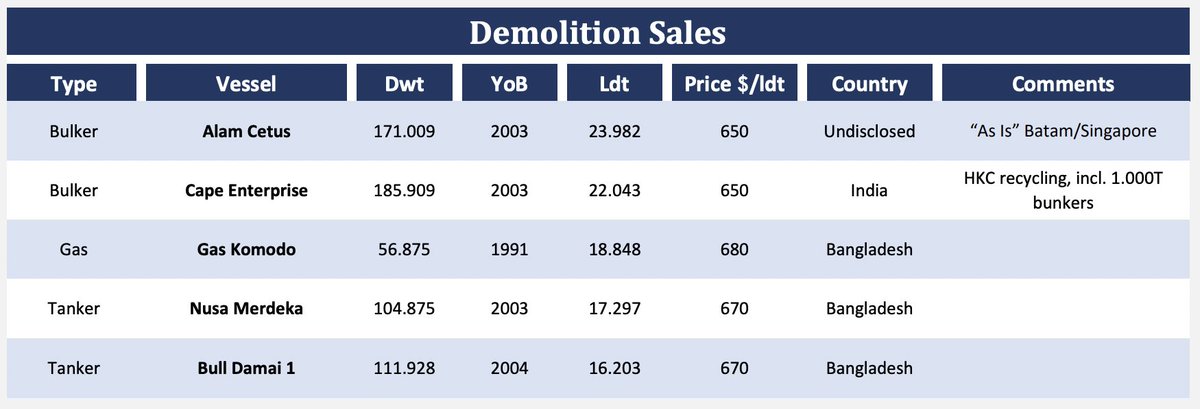
1/ #Tankers are the biggest beneficiary of changing trade patterns due to Russian sanctions. PERIOD.
A look into why tanker rates are surging this week and why this is just the beginning.
A 🧵...
A look into why tanker rates are surging this week and why this is just the beginning.
A 🧵...

2/ The picture is becoming even clearer that Russian oil which used to go via pipeline and short sea to Europe will go all the way to China and **BACK** instead.
bloomberg.com/news/articles/…
bloomberg.com/news/articles/…
3/ **BACK** from China? YES. The West is structurally short on refining capacity and the deficit is getting larger as Russian refining capacity becomes shut in and European refiners struggle to source the slate needed to run at full capacity. reuters.com/business/energ…
4/ While North American Refiners run full bore at near record margins to offset some of the deficit, Chinese refiners remain underutilized: spglobal.com/commodityinsig…
5/ With a diesel crisis developing in Europe and North America insufficient to make up the difference, it is only a matter of time before Chinese refineries increase runs to export products back to the West. oilprice.com/Latest-Energy-…
6/ Trade patterns are far more complex and nuanced than the marginal barrel of Chinese refined product shipped directly to Europe.
But if the marginal spare refining capacity is in China and refining capacity is lost in Europe, the net effect will be more products E to W.
But if the marginal spare refining capacity is in China and refining capacity is lost in Europe, the net effect will be more products E to W.

7/ How to even begin to quantify this?
Even before factoring Russian trade disruption I estimated around 100 extra VLCCs were needed just to accommodate OPEC production coming back through year end:
Even before factoring Russian trade disruption I estimated around 100 extra VLCCs were needed just to accommodate OPEC production coming back through year end:
https://twitter.com/AllVentured/status/1510772631301144581?s=20&t=Z2FrQmFK9zma4GvP5S_nAw
8/ In 2021 Europe imported 2.2M b/d of crude and 1.2M b/d of products from Russia. If this all must ship to China and at least part of the way back instead this is another 100+ VLCCs of capacity needed. Mind you, this is into a fleet of 860.
https://twitter.com/AllVentured/status/1511571533227085828?s=20&t=Z2FrQmFK9zma4GvP5S_nAw
9/ For perspective, when the US sanctioned the COSCO tanker fleet totaling ~70 VLCC equivalents of capacity in Sept 2019, it quickly sent VLCC rates from $30K to nearly $300k per day. 

10/ I won't be as bold as to say VLCC rates are going back to $300k but I am watching the tape and its telling me that ship availability is already tight in the smaller sizes and rates are going MUCH HIGHER as SPR and OPEC volumes increase.
https://twitter.com/AllVentured/status/1510758653317586946?s=20&t=Z2FrQmFK9zma4GvP5S_nAw
11/ And although #tanker equities are already at or near 52wk highs, they are nowhere near pricing today's spot rates let alone where rates appear to be going.
At today's spot rates, Aframax and Suezmax operators like $TNK and $TNP make their entire market caps in FCF in a year.
At today's spot rates, Aframax and Suezmax operators like $TNK and $TNP make their entire market caps in FCF in a year.

12/ Dislocations in tanker rates between sizes, geography, and product traded (clean vs dirty) generally only exist for short periods as high enough rates incentivize tankers to switch trades. ALL benefit from increased aggregate trade.
Clean/Dirty correlation over time:
Clean/Dirty correlation over time:

13/ If indeed a shortage of aggregate tanker capacity develops and rates stabilize at very high levels, rates across sizes/trades will trend toward a uniform $/ton benefitting the biggest ships most.
14/ Although a pure play VLCC operator like $DHT is likely to have the highest margins in an extremely high rate environment, it doesn't necessarily mean it will be the the best performing stock.
15/ In a rapid change of paradigm from low rates to very high rates, the companies with the highest financial leverage (**and risk**) like $TNP and those that aggressively repurchase shares below intrinsic are likely to have the greatest share price appreciation.
16/ Here is the list of US listed oil/product tanker cos from largest to smallest by gross asset value: $FRO $EURN $STNG $TNP $INSW $TRMD $DHT $TNK $NAT $ASC
• • •
Missing some Tweet in this thread? You can try to
force a refresh












